
Workers operating in low-visibility conditions are at higher risk of injury, and high-visibility clothing is the first line of defense. The same applies to recreational activities. A recent study in Safety Science found that cyclists wearing hi-vis clothing experienced a 47% decrease in accidents.
Wearing brightly colored safety clothing significantly reduces the risk of accidents at work or at play.
For any business, organization, or individual interested in learning more, we've prepared this helpful guide that gives you what you need to know about hi-vis safety clothing, including the best ways to customize or brand it.
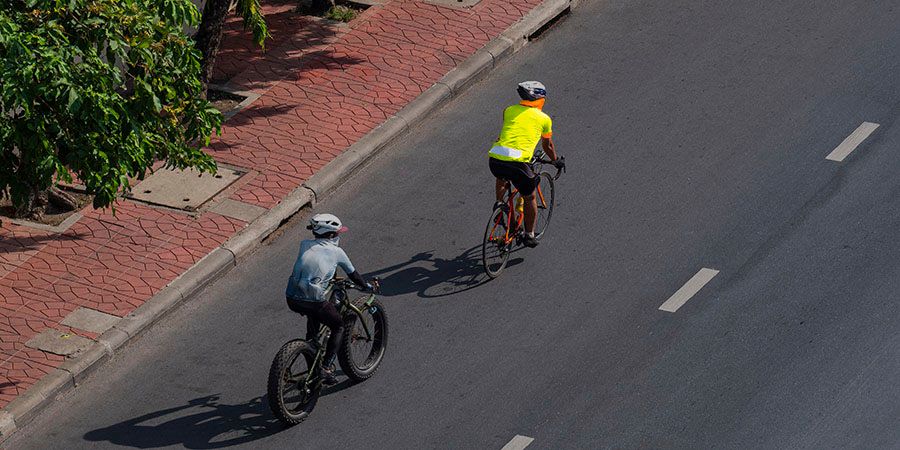
What is hi-vis clothing?
High-visibility apparel, also known as hi-viz, safety wear, or reflective clothing, is designed to make the wearer more visible in low light or hazardous conditions. Hi-vis clothing features bright, fluorescent colors and reflective strips or other materials that help reflect light and make the wearer more visible.
This term encompasses various clothes and designs, from shirts to pants, outerwear, and headgear. Workers wearing hi-vis clothing, such as construction workers, traffic controllers, and emergency responders, minimize their risk of being hit by vehicles or other machinery.
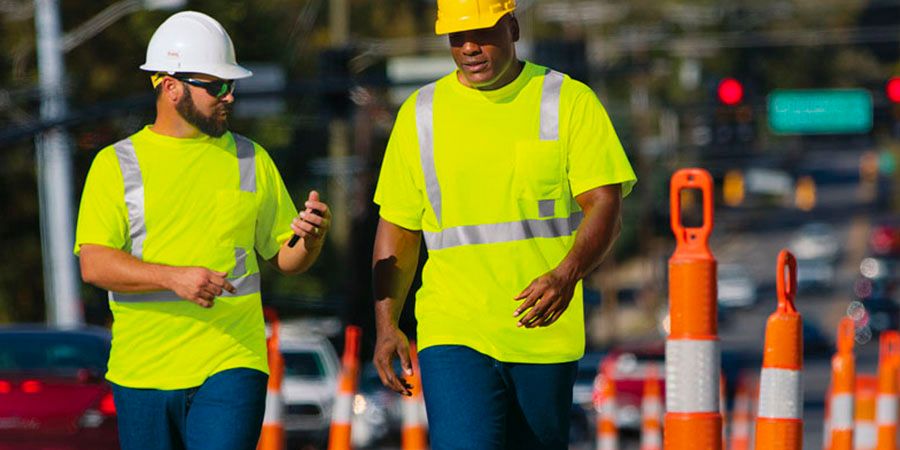
What qualifies clothing as high-vis?
To be considered safety or hi-vis clothing, a garment must meet specific standards for the amount and type of reflective material used. These standards are defined by the American National Standards Institute (ANSI) and the International Safety Equipment Association (ISEA). They specify the minimum amounts of reflective material used on the apparel to be considered hi-vis.
Who uses high-vis clothing?
Hi-vis clothing is commonly used in various industries where workers need to be easily seen and for sports and recreational activities. Some examples of uses for hi-vis clothing include:
- Construction: All types of construction workers, demolition crews, and repair workers.
- Transportation: Traffic controllers, airport ground crew, shipping crews, railroad workers.
- Public safety: Police officers, firefighters, paramedics, rescue, and other public safety workers.
- Manufacturing: Workers in manufacturing plants, warehouses, and other industrial settings.
- Sports: Runners, cyclists, skaters, and other athletes who exercise outdoors or at night.
- Recreation: Hunters, hikers, kayakers, cross-country skiers, and more.
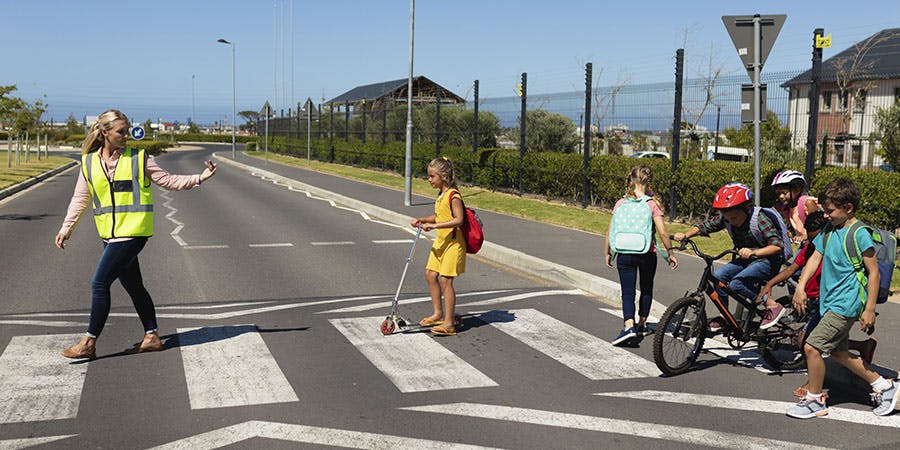
Is high-visibility clothing mandatory?
Hi-vis clothing is mandatory in certain instances. The Federal Manual on Uniform Traffic Control Devices stipulates that highway maintenance and road construction workers must wear high-visibility clothing to reduce the risk of on-the-job accidents.
High-visibility standards are national guidelines, but how they are enforced depends on the state. That's why it's best just to follow the Occupational Safety and Health Administration (OSHA) interpretation of the manual which stipulates that workers must wear hi-vis clothing if they satisfy one of the following criteria if they are:
- Working on a highway maintenance job
- Working in or near a roadway construction zone
- Exposed to public vehicle traffic or construction equipment
Other industries are not required by law to mandate safety apparel for their workers but choose to anyway because it ensures higher safety. Industries like construction, airline, warehouse, and electric power transmission are just some examples that make hi-vis clothing a requirement for workers.
If you have a business in one of these lines of work, staying up to date with your state's standards for worker uniforms is a smart business decision. It can save your company from potential violations–but most importantly, save a life.
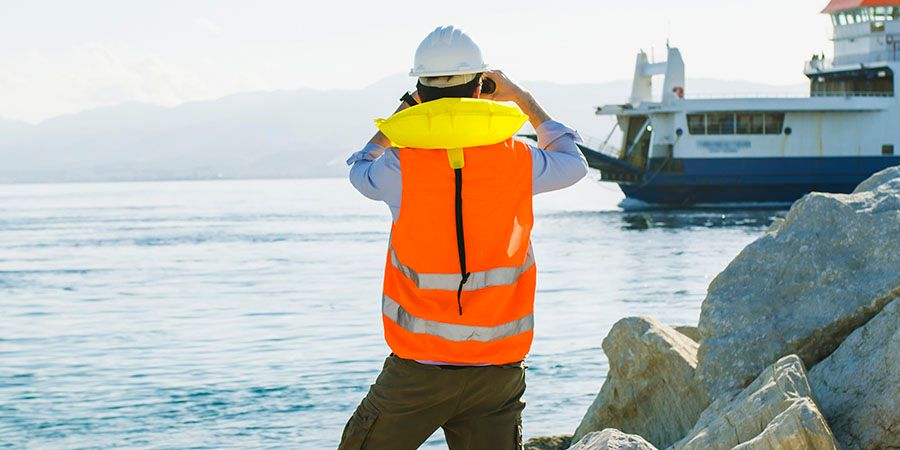
Standards for high-visibility clothing
Safety standards by ANSI and ISEA specify the minimum amounts of reflective material required to meet the requirements for each class of hi-vis clothing. They also specify the types of apparel that can be considered hi-vis, such as vests, jackets, pants, hats, and full-body suits.
What is ANSI/ISEA 107?
The standard for high-visibility safety apparel is ANSI/ISEA 107. It specifies high-visibility garments' design and performance requirements to increase the wearer's visibility in low light and other potentially hazardous situations.
Generally, the standards for hi-vis clothing specify the following:
- The minimum amounts of reflective material must be used, depending on the clothing class.
- Specific types of reflective material are used, such as retroreflective tape or stripes.
- The minimum width and height of the reflective material to be used on hi-vis clothing.
- The minimum areas of the garment to be covered by reflective material, depending on the type.
- The minimum amount of fluorescent background material for hi-vis clothing.
- The specific colors are acceptable for hi-vis clothing (yellow-green, orange-red, or red).
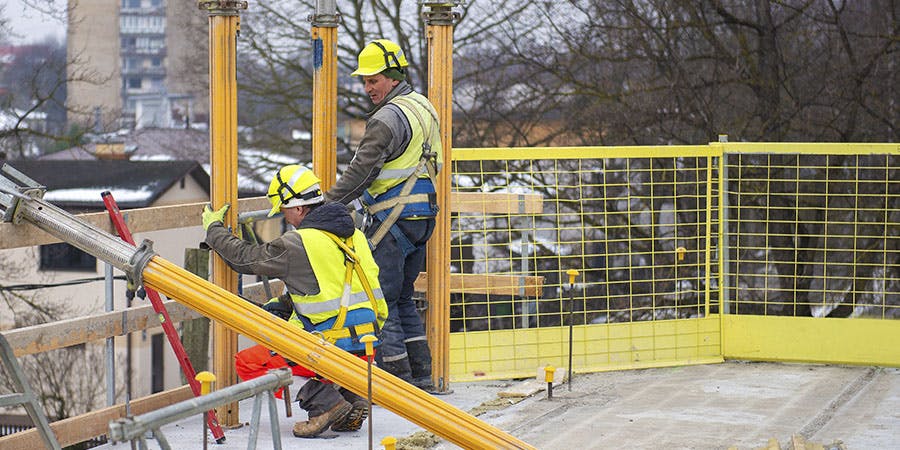
By following these standards, manufacturers of hi-vis clothing ensure that their products meet the requirements for each class and provide the necessary visibility and safety for workers who wear them.
Hi-vis apparel classes and types
The standards for safety wear are not of the one-size-fits-all variety. Instead, apparel is designated by "Type" and "Class." There are three types and four classes.
Clothing types
There are several types of high-visibility apparel designed for specific environments or uses:
Off-Road or Type O is used in off-road environments, such as on a construction site or bicycle trail. Type O is for workers who aren't required to wear high-visibility apparel but work in an environment where visibility is crucial to safety. Typical items are vests and shirts.
Roadway or Type R is used on roadways, such as highways or parking lots. Type R is for workers exposed to road traffic, heavy equipment, and associated vehicles. Typical items include shirts, vests, jackets, pants, and hats.
Public Safety or Type P hi-vis apparel in this category is intended for public safety workers and first responders, such as police officers, firefighters, and paramedics. Typical items can range from vests and jackets to full-body suits with reflective stripes or panels.
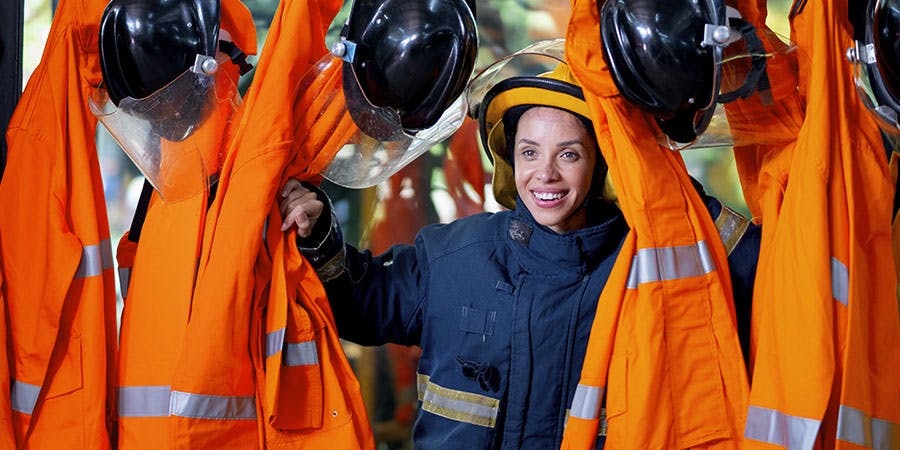
Performance classes
The ANSI specifies performance classes for safety apparel, which indicate the minimum amounts of fluorescent and retroreflective material that must be used and the minimum amounts of material that must be worn on the torso and legs. The performance classes are as follows:
Class 1 is intended for workers near traffic moving less than 25 mph, such as school crossing guards or parking lot attendants. Clothing must have at least 217 square inches of fluorescent material and 155 square inches of reflective material. At least 0.14 square feet of the fluorescent material must be on the torso, and at least 0.10 square feet of the reflective material must be on the torso and legs.
Class 2 is intended for workers near traffic between 25 and 50 mph, such as highway construction workers or utility workers. Clothing must have at least 775 square inches of fluorescent material and 201 square inches of reflective material. At least 0.50 square feet of the fluorescent material must be on the torso, and at least 0.13 square feet of the reflective material must be on the torso and legs.
Class 3 is intended for workers near traffic over 50 mph, such as flaggers or emergency responders. Clothing must have at least 12405 square inches of fluorescent material and at least 310 square inches of reflective material. At least 0.80 square feet of the fluorescent material must be on the torso, and at least 0.20 square feet of the reflective material must be on the torso and legs, plus retroreflective material between the shoulders sn elbows.
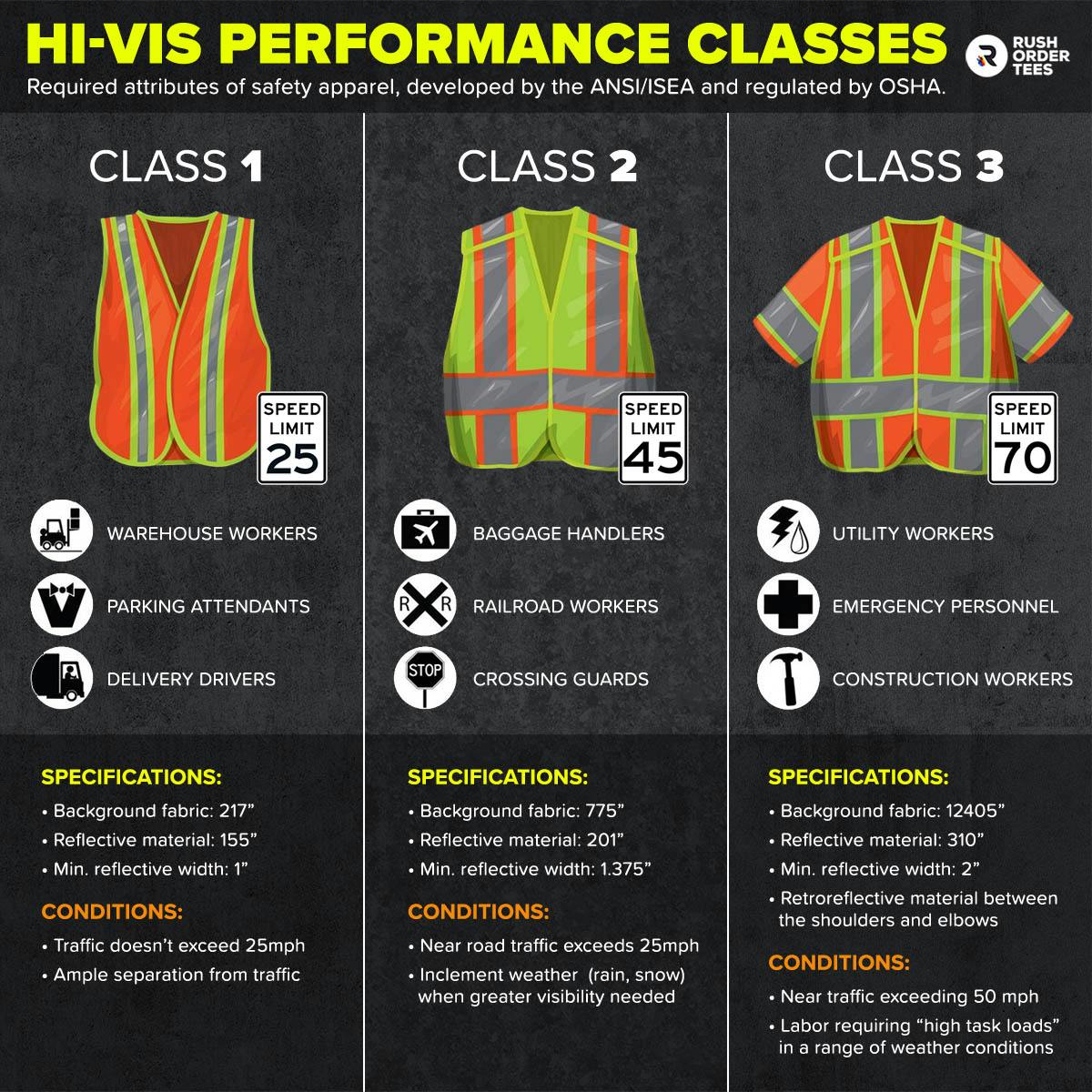
Standard high-visibility colors
The American National Standards Institute (ANSI) specifies that high visibility clothing must be fluorescent yellow-green, fluorescent orange-red, or fluorescent red, with the fluorescent material covering at least the front and back of the torso.
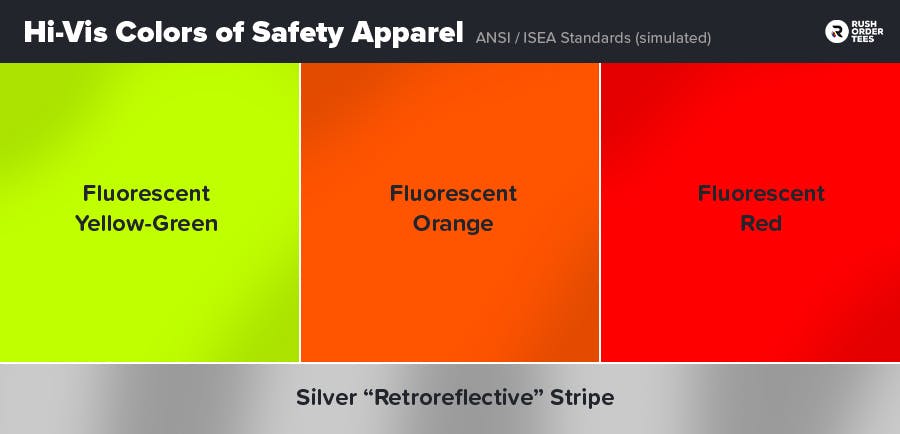
High-visibility clothing for all seasons
While hi-vis clothing is often associated with construction and other outdoor industries, it can also be an important component of a personal safety plan for anyone who spends time outdoors, regardless of the season. There are hi-vis apparel options for both warm and cold working conditions.
Warm Weather
Hi-vis clothing for warm weather should be made from lightweight, breathable, moisture-wicking fabrics that will keep the wearer cool and comfortable, even in hot conditions. Some examples of hi-vis clothing that may be appropriate for warm weather include:
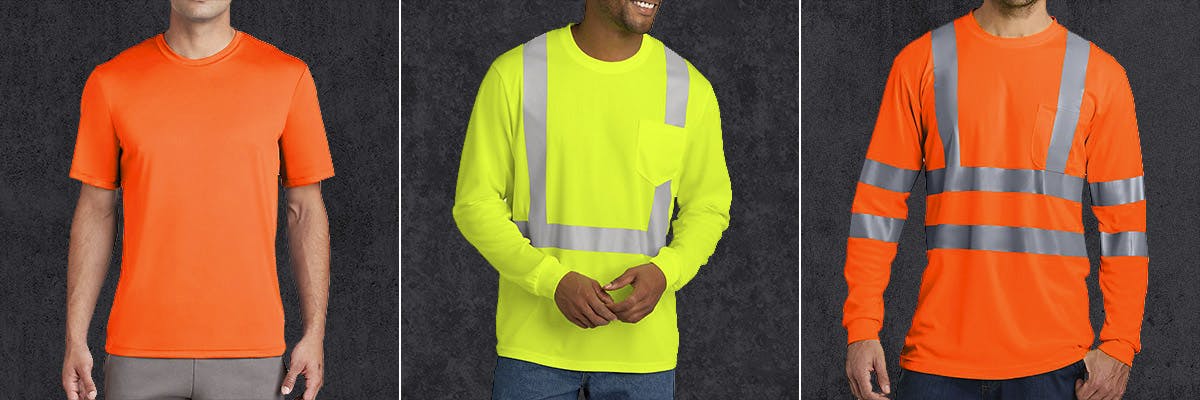
Hi-vis performance shirts are essential on hot summer days, whether you're working outdoors or mountain biking in the desert. For comfort and temperature control, go for the 100% polyester or performance blends with moisture-wicking properties. Any Class 3 t-shirt will require long sleeves with retroreflective stripes. Screen printing is still the best method to brand hi-vis shirts with your logo.
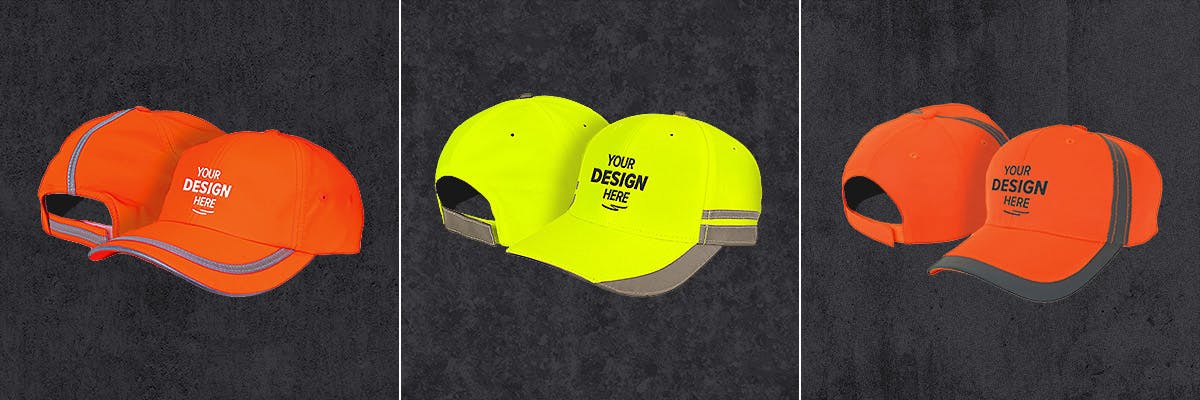
Hi-vis baseball hats are a welcome addition to any hi-vis outfit for working or playing outdoors. They are not part of the standards, but they help. The bill keeps the sun out of the eyes, and the inner sweatband helps keep the face dry. Most hi-vis baseball caps are made with synthetic material, a medium profile, and have retro-reflective accents. Embroidery or patches are the best customization options.
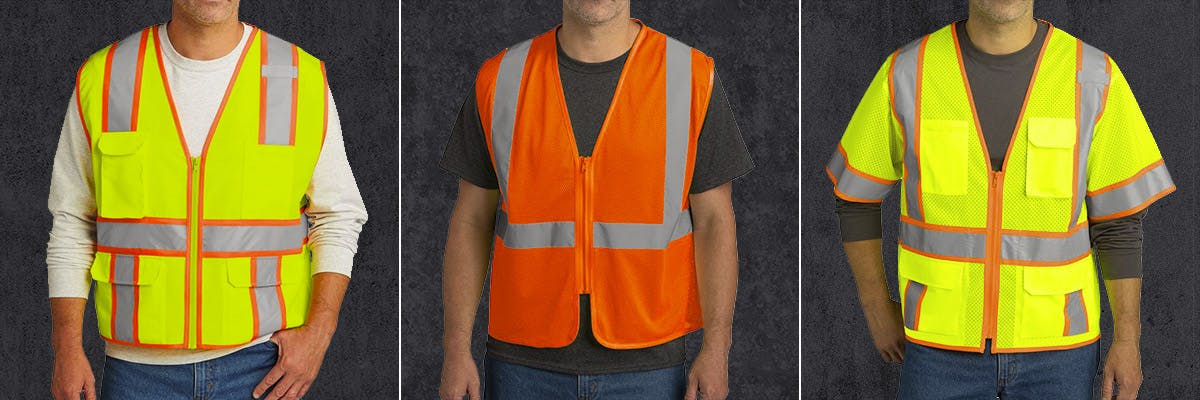
Hi-vis safety vests are the quintessential hi-vis apparel, and with their lightweight mesh fabrics are excellent for keeping cool in warm weather. Consider if you need pockets, and if so, how many? The number of pockets varies among brands. Most vests are Class 1 or Class 2, but we do have one in our catalog that is Class 3 (see the image above, right). Customization options are screen printing, embroidery, or patches.
Cold Weather
Hi-vis clothing for warm weather should be made from heavier fabrics, with long sleeves and features like water-repellant, wind-resistant outer layers and insulted linings to keep workers warm in the winter. Some examples of hi-vis clothing that may be appropriate for cold weather include:
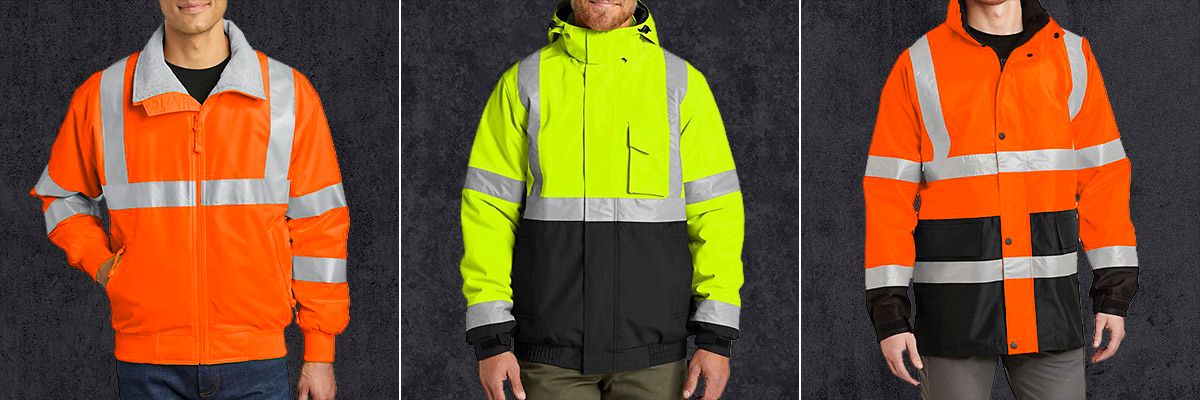
Hi-vis jackets are essential for winter workers as well as antarctic adventurers. Most of the safety jackets in our catalog are made with synthetic material and an outer coating designed to withstand the elements. Consider how many pockets you need, as the number varies between products. For extra warmth, the hoodie jackets do the job. For branding, we recommend embroidery or custom patches.
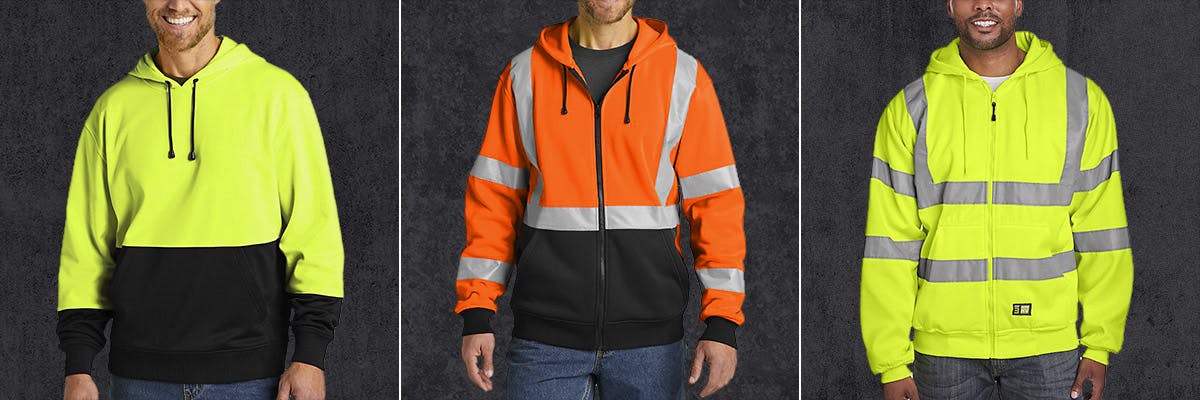
Hi-vis hoodies are a top choice for safety apparel in the cold, especially in late fall and early spring. Over the winter, hoodies get paired with jackets for extra warmth. Most hi-vis hoodies in our catalog are Class 3 (reflective stripes on the sleeves) and made from polyester fleece, which is comfortable for various work environments and durable for long-term use. Customize with screen printing or embroidered logo.
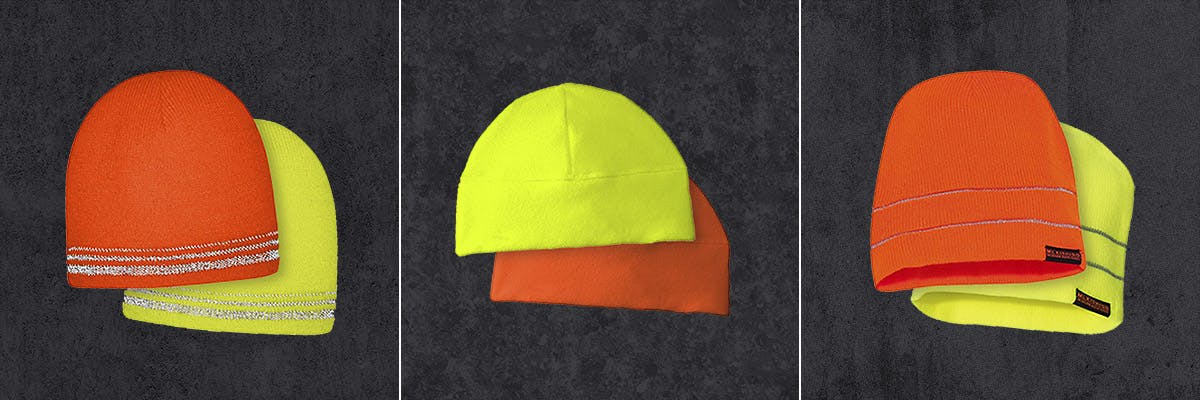
Hi-vis beanies are an excellent addition to a high-visibility outfit in colder weather. Although they don't factor into any standards, hi-vis beanies will help make workers more visible and warm their heads. Most beanies are made of blended knit or synthetic material, and the best way to customize them is with embroidery or patches. For more, check out the Top 5 Types of Beanies.
Customizing safety apparel with your brand
When branding hi-vis clothing with your logo, be aware of limitations. One factor is the materials; certain waterproof or synthetic materials may be difficult to print on and require embroidery. Another factor is the print area; certain construction leaves little room for logo placement.
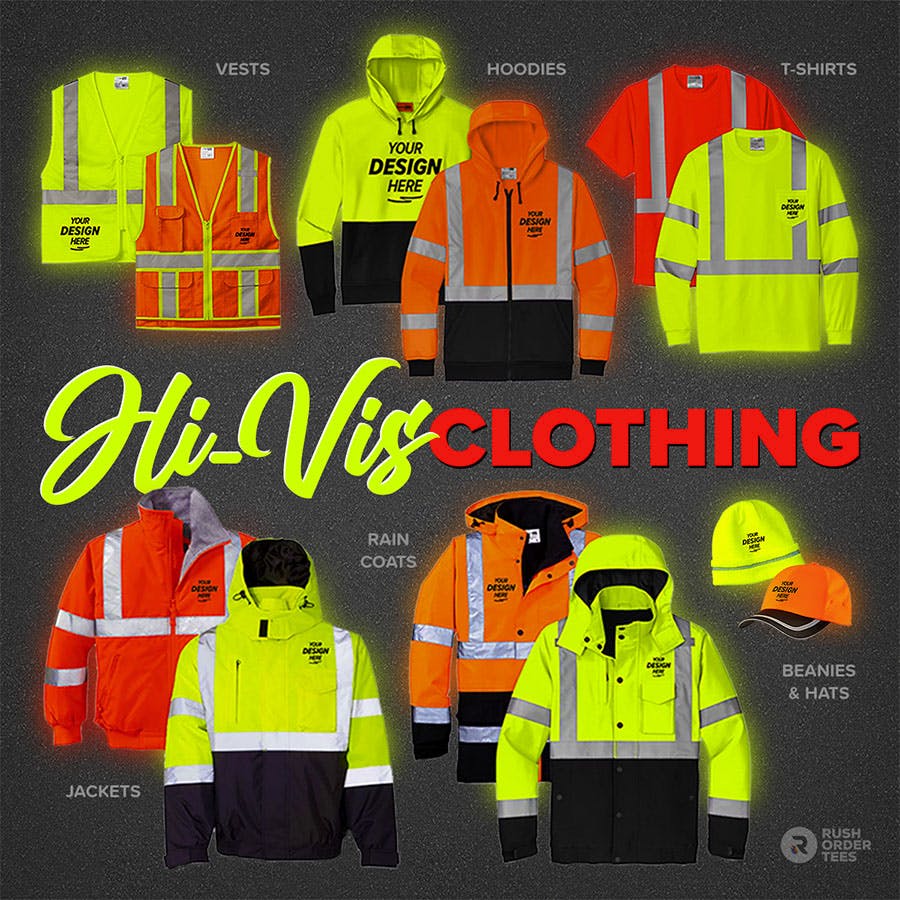
- Screen printing - This classic print method is suitable for a variety of hi-vis apparel, such as shirts, vests, hoodies, hats, and especially for performance wear since those can't be digitally printed.
- Embroidery - The best option for higher-end items like jackets. Often a logo is embroidered on the pocket area or the pocket itself. Beanies are also a great candidate for embroidery.
- Patches - An often overlooked way to embellish garments, patches are excellent for waterproof materials such as hi-vis rain jackets and rain hats. Rubber patches do exceptionally well.
High Visibility Clothing Prevents Accidents
Bottom line, brightly-colored safety clothing reduces the likelihood of accidents and injuries for those in low visibility conditions. With the ability to customize hi-vis gear, you can present a professional appearance while being safe.
We hope this guide has provided the information you need to know, from the safety standards of ANSI and ISEA to the enforcement by OSHA, the different apparel types, their uses, and the best print methods.
When you're ready to customize high-visibility clothing with your logo, jump into our easy-to-use Design Studio to get started. Our sales team is always standing by to assist with your order.
Hi-vis clothing FAQs
Quick answers to some of the most common questions:
Is red considered a high-vis color?
Yes, red is considered a high-vis color. The ANSI and ISEA define fluorescent red as one of the colors that are acceptable for hi-vis clothing. This is distinct from the more common orange-red. Fluorescent red is a bright red color highly visible in daylight and under artificial light.
What is retroreflective material?
Retroreflective material is a type of material that reflects light back to its sources, such as a car's headlights or a flashlight. This makes the material highly visible in low-light conditions. It's used in high-visibility clothing and safety gear, such as road construction signs and traffic cones.
How do I care for hi-vis clothing?
Follow the manufacturer's instructions for washing and drying it. Usually, hi-vis clothing should be washed in warm water using mild detergent, dried in a low-heat setting, or hung to dry. Avoid using bleach or fabric softeners, as these can damage the reflective material on hi-vis clothing.
What is ANSI?
The American National Standards Institute is a non-profit organization responsible for developing and maintaining standards for various products and services. ANSI's standards for hi-vis clothing are developed through a consensus-based process that involves input from stakeholders.
What is OSHA?
The Occupational Safety and Health Administration is a federal agency responsible for setting and enforcing safety and health standards in the workplace. OSHA adopts standards for hi-vis clothing to ensure workers at risk of being hit by vehicles or machinery have necessary visibility and protection.

Imri Merritt
About the Author
A graduate of the Multimedia program at the University of the Arts in Philadelphia, Imri Merritt is an industry veteran with over 20 years of graphic design and color separations experience in the screen printing industry.

